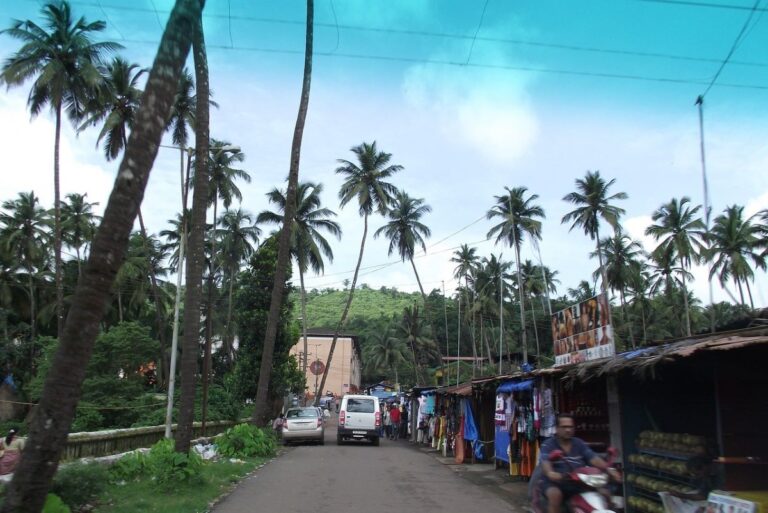Skift Take
Goa is seeking to position itself as more than just a tourist destination known for its beaches and nightlife. As the state seeks to welcome more visitors, it is taking steps to mitigate tourism’s negative impacts on both the environment and its residents.
Bulbul Dhawan
The coastal state of Goa has invited public comments, objections and suggestions on the draft Goa Tourism Promotion and Management Bill, 2024. The bill aims to look into various aspects of tourism in the state, including illegalities, job generation and its impact on the state’s economy.
Goa Tourism Minister Rohan Kaunte said the bill has already taken into account feedback from industry players.
Tourism Clusters: As part of tourism development, the state is developing tourism clusters in the state. Currently, there are no tourism clusters in the state.
In a draft bill read by Skift, Goa’s tourism ministry said the number of tourists visiting the state significantly outnumbers its residents, and therefore it is important to “identify and demarcate areas to be targeted for tourism development and ensure their safety and well-being through appropriate regulation and control of activities, individuals and groups.”
Sustainability fee? Recent media reports have suggested the province plans to introduce a 2 per cent “tourism development and sustainability” fee. The province’s tourism minister clarified that claims of a sustainability fee are “baseless”. “It will be a maximum 2 per cent tax and will be limited to the relevant cluster only once it has been established,” Kaungte said.
However, the promotion of sustainable tourism practices is a key element of the state’s draft bill. The state aims to encourage the adoption of sustainable practices and reduce the negative impacts of tourism on the environment.
The draft bill includes a separate chapter focusing on measures for sustainable tourism such as establishment of a committee responsible for developing, managing and realising the state as a sustainable tourism destination, awareness and capacity building, carrying capacity assessment etc.
India emerges as future growth engine for global tourism: OECD
“Outbound travel from India is emerging as a future growth driver for global tourism,” said a recent report on tourism trends and policies by the Organisation for Economic Co-operation and Development (OECD). The report cited a rapidly expanding middle class and the expansion of domestic air routes as key factors.
Nearly 9.4 million passengers traveled abroad from India in the first three months of 2024, up 15% from the 8.1 million passengers who traveled abroad in the same period last year, according to data from the Bureau of Civil Aviation of India.
India is becoming a fast-growing source of international tourism, with “a rapidly expanding pool of tourists visiting India for the first time,” according to a recent report by consulting firm McKinsey & Company. Indian spending overseas is also reaching a new peak, with travel accounting for $17 billion of the $31.7 billion spent by Indians abroad in 2023-24.
Indian airlines’ on-time performance drops drastically
According to data analysis shared by India’s Directorate General of Civil Aviation (DGCA), there has been a significant decline in on-time performance across Indian airlines from May 2023 to May 2024. Low-cost carrier Akasaka Air, which had the highest on-time performance in May this year as well as last year, saw its on-time performance at four metropolitan airports — Bengaluru, Delhi, Hyderabad and Mumbai — fall to 89.2% from 92.6% last year.
IndiGo, a standard-bearer for on-time performance for several years, has slipped from second place last year to fourth place in May 2024, with its on-time performance declining from 90.3% to 76.1%. Its full-service sister airlines Vistara and Air India also saw their on-time performance decline by more than 10%.
Low-cost carrier SpiceJet is the only one of the seven domestic airlines to see an improvement in this metric, increasing from 60.9% in May 2023 to 64.2% this year.
Galeries Lafayette Haussmann adopts India’s UPI payment system
French department store brand Galeries Lafayette has announced that it will implement India’s Unified Payment Interface (UPI) system at its flagship Haussmann store.
Vincent Seneca, director of Galeries Lafayette Paris Haussmann, said the UPI integration will enable a convenient payment option for Indian customers as visitor numbers from India grow. “This initiative becomes even more important as we plan to open our first India store in Mumbai in 2025, followed by New Delhi,” Seneca added.
UPI is a technology introduced in India in 2016 that enables instant interbank transfers through a mobile application. Users can link multiple bank accounts to a single app, and each bank account is given a unique virtual identifier to make payments.
Earlier this year, UPI payments were also made available for purchasing tickets to the Eiffel Tower as part of a partnership between UPI developer National Payments Corporation of India and French fintech company Lyra Network.
Struk Hotels opens Sangam by Struk in Mussoorie
Struktik Hotels, an experiential hotel chain, has announced the opening of Sangam at Struktik in Mussoorie, Uttarakhand. The 10-room hotel is the chain’s fourth property in the hill region, taking its total room count in Mussoorie to over 85. The chain currently owns 12 hotels.
Manish Goyal, founder of Strukt Hotels, told Skift, “Strukt Hotels has been very consistent when it comes to expansion as the founding team strongly believes in stability. The vision is to maintain a balance between experiential stays and exploring new niche destinations.”
The company’s initial plan was to gain a strong foothold in the northern state of Uttarakhand, where it already has eight properties with over 150 rooms. The chain also has a luxury portfolio of over 120 rooms in Rajasthan. “The group is now expanding into Himachal Pradesh with the opening of a four-star resort in the emerging hill region of Nahan,” Goyal said.
Photo credit: As part of tourism development, the state is developing tourism clusters in the state.

